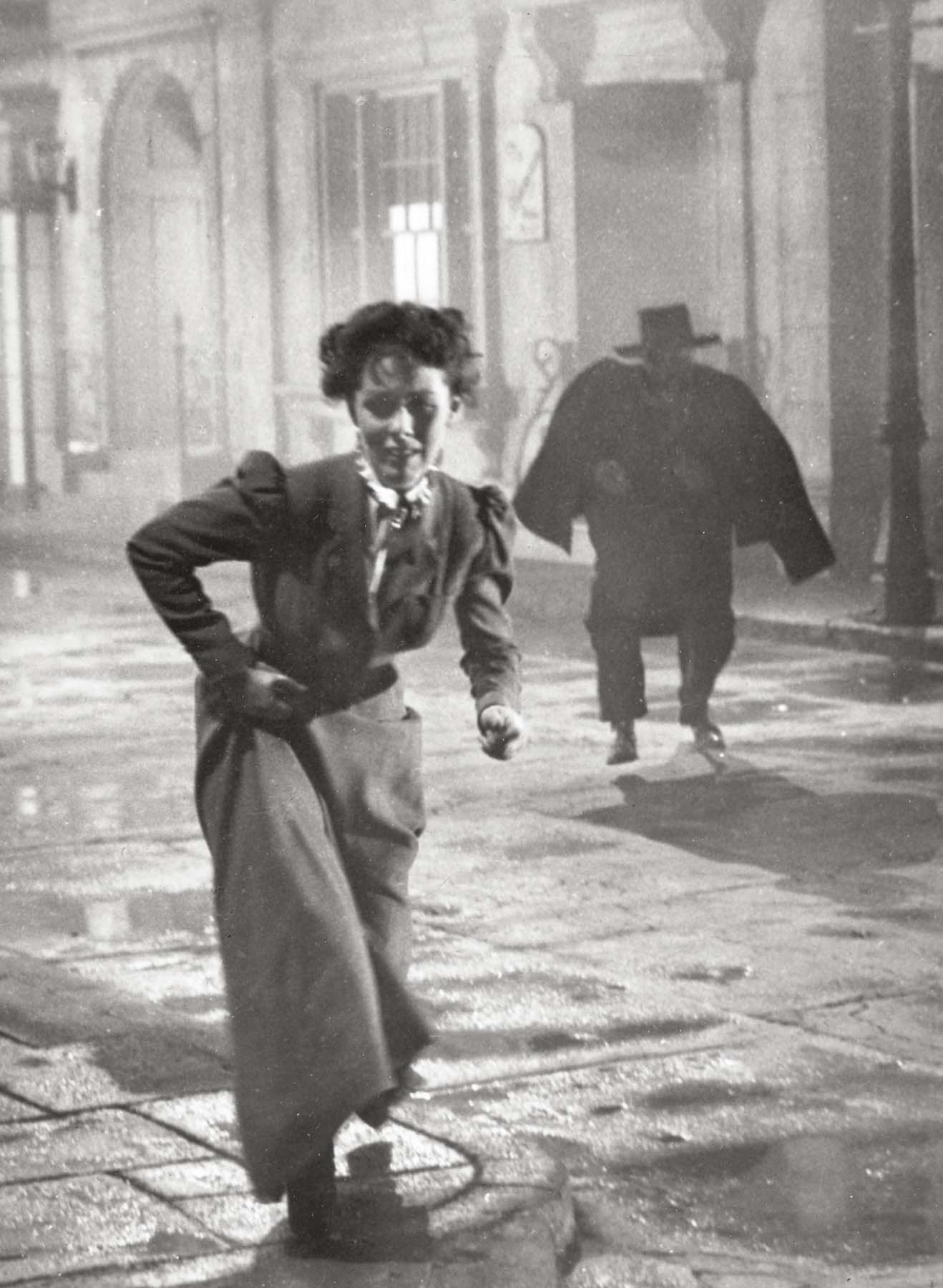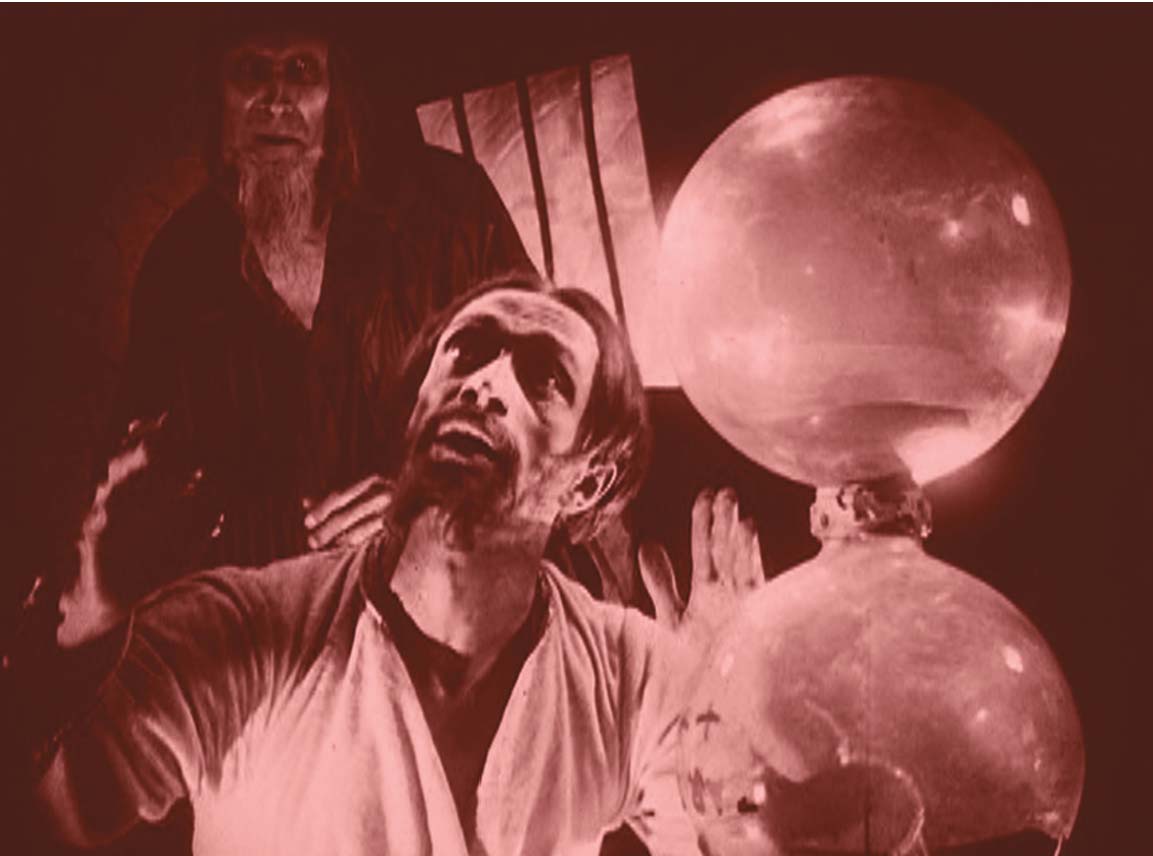
Phyllis Kirk and Vincent Price in House of Wax
The film’s most famous scene shows Atwill, rising from his wheelchair and perfectly able to walk, advancing on Wray and telling her how he plans to re-create his Marie Antoinette by embalming her in wax, preserving her beauty forever. She strikes him in the face and is stunned when his features crack away. His greatest creation has been his own wax image—underneath the mask is a hideously scarred visage. Wray recounted to numerous interviewers how director Michael Curtiz shot the scene before she had ever seen the burn makeup, and how she simply froze on camera when confronting it for the first time. Her stunned pause before she screams is retained in the finished film.
In 1953, when 3-D movies were as much of a novelty as color was in the early 1930s, Warner remade Mystery of the Wax Museum as House of Wax. Curiously enough, the director, Andre de Toth, was blind in one eye and incapable of seeing in 3-D, but this may have been an asset, forcing him to concentrate on the drama rather than on self-conscious camera effects. Crane Wilbur’s screenplay remained remarkably faithful to the 1933 script; numerous scenes in the finished film are virtual re-creations of their predecessors.
Wilbur changed the setting to Victorian New York and streamlined the story by removing the newspaper characters and subplot. In the renamed role of Professor Jarrod, Vincent Price, previously a versatile and well-regarded character actor, solidified his reputation as Hollywood’s new king of horror with a celebrity equal to that of Karloff and Lugosi before him. For the rest of his career, House of Wax would provide Price with a template for many other fright films about mad geniuses who exact hideous (and often very clever) revenges, perhaps most notably in The Abominable Dr. Phibes (1971)—tagline: “Love means never having to say you’re ugly”—and Theater of Blood (1973). The ingenue roles were well handled by Phyllis Kirk, in the Fay Wray part, and Carolyn Jones, who a decade later would achieve her greatest fame as television’s Morticia Addams.
One of the more memorable anecdotes about the making of House of Wax came from actor Paul Picerni. At the film’s climax, his character is yanked from a guillotine moments before decapitation. Director de Toth insisted on doing the scene in a single take on a real guillotine with no safety considerations or constraints; for one thing, he wanted the actor himself to control the drop. Picerni refused and was consequently suspended. He returned to the set only after a compromise was made: a removable steel bar was installed to block the blade’s descent.
House of Wax was without question the most successful stereoscopic (and stereophonic) movie of its time. Audiences experienced a degree of sensory immersion unlike anything they had seen in a movie theater or could hope to see on 1950s television. Their sense of awestruck wonder is best summed up by Phyllis Kirk’s amazed question when she has her first uncanny encounter with a disorienting, wax-bound world: “Why does it have to seem so real?”
If you enjoyed Mystery of the Wax Museum (1933), you might also like:
WAXWORKS
NEPTUNE-FILM A.G./UFA, 1924 (GERMANY)

Conrad Veidt as Ivan the Terrible in Waxworks